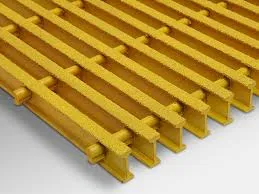loading...
- No. 9, Xingyuan South Street, Dongwaihuan Road, Zaoqiang County, Hengshui, Hebei, China
- admin@zjcomposites.com
- +86 15097380338
- Welcome to visit our website!
water tank frp
The Significance of FRP in Water Tank Manufacturing
In the modern era, where technological advancements continually reshape industries, the water storage sector is no exception. One of the most innovative materials making waves in this field is Fiber Reinforced Plastic (FRP). Water tanks, essential for various applications ranging from residential to industrial, have significantly benefited from the unique properties of FRP. This article explores the advantages of FRP water tanks and their growing prominence in water storage solutions.
Water storage has always been a fundamental requirement for human civilization. As populations grow and urbanization intensifies, the demand for efficient, durable, and sustainable water storage solutions has skyrocketed. Traditional materials like concrete and steel have served well in this niche but often come with substantial limitations such as susceptibility to corrosion, high weight, and maintenance requirements. Enter FRP, a composite material that combines plastic resin with reinforcing fibers like glass or carbon. The result is a lightweight, corrosion-resistant, and highly durable product that addresses many of the shortcomings of conventional water tank materials.
The Significance of FRP in Water Tank Manufacturing
Additionally, FRP water tanks are significantly lighter than their concrete and steel counterparts. This reduced weight not only makes transportation and installation easier but also reduces the need for extensive foundation work, thereby lowering overall construction costs. FRP tanks can be manufactured in various shapes and sizes, offering flexibility for installation spaces, whether on rooftops, in basements, or integrated into industrial setups.
water tank frp

Moreover, the durability of FRP is unmatched. These tanks can withstand extreme temperatures and are resistant to impact and wear, ensuring a long lifespan with minimal maintenance. Unlike concrete tanks, which may crack and require sealing or repairs over time, FRP tanks maintain their structural integrity longer, making them a more cost-effective option in the long run.
Another critical advantage of FRP is its environmental compatibility. As global awareness of sustainability grows, the construction industry is increasingly moving towards materials and products that are eco-friendly. FRP can be manufactured using recycled materials and is fully recyclable itself, which is a significant consideration for environmentally-conscious consumers and industries. Furthermore, the energy involved in producing FRP is considerably less than that required for cement and steel production, further reducing its carbon footprint.
Safety is also a crucial consideration when it comes to water storage. FRP tanks are non-toxic and do not leach harmful substances into the water, ensuring safe storage for drinking water and other applications. This safety feature aligns with the health standards required for potable water storage, making FRP an ideal choice for municipalities and households alike.
As demand for water storage solutions continues to rise, the versatility, durability, and sustainability of FRP water tanks make them an increasingly popular option. Their ability to meet the diverse needs of different sectors—from agriculture to urban planning—demonstrates their practical applications in real-world scenarios. Therefore, FRP is not just a trend but rather a significant advancement in the water storage industry, promising cleaner, safer, and more efficient water solutions.
In conclusion, the shift towards FRP water tanks signifies a vital step forward in utilizing advanced materials for essential utilities. With their unique properties and advantages, FRP water tanks are poised to take a leading role in efficiently meeting the global demand for safe and sustainable water storage. As technology continues to evolve, so too will the innovations surrounding water tank construction, ensuring that our water systems are equipped for the challenges of tomorrow.
-
GRP Structures: The Future of Lightweight, High-Performance EngineeringNewsJun.20,2025
-
FRP Water Tank: High-Performance Storage for Corrosive and Clean Water SystemsNewsJun.20,2025
-
FRP Square Tube: The New Industry Standard for Chemical and Structural ApplicationsNewsJun.20,2025
-
FRP Pultruded Profiles: The Ultimate Choice for Lightweight Structural StrengthNewsJun.20,2025
-
FRP Handrails: The Safer, Smarter, and Stronger Choice for Modern InfrastructureNewsJun.20,2025
-
FRP Grating: The Smart Solution for Durable, Lightweight Industrial FlooringNewsJun.20,2025
-
Why Choose a Galvanized Water Tank for Your Storage NeedsNewsMay.21,2025
